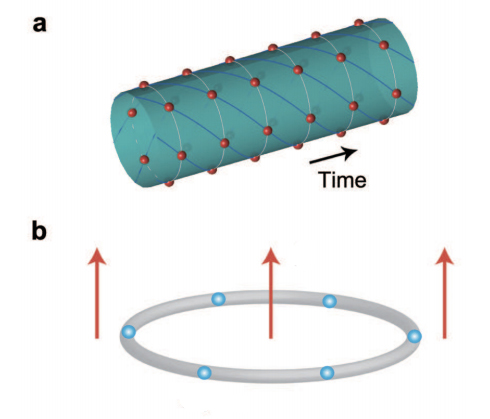In a googol of years or so, scientists expect the universe to enter a state known as “heat-death,” where there’s no thermodynamic free energy remaining and everything’s stopped moving. A clock that could keep time even after the heat-death would require a crystal that has periodic structure in time as well as space, which would mean it is a four-dimensional crystal. There’s actually a practical use for such a 4D crystal during this epoch, as scientists would use the device to study complex physical properties and phenomena in the quantum world.
A team of researchers led by scientists from the Lawrence Berkley National Laboratory have proposed the experimental design of such a 4D crystal. The paper, published on Arxiv, describes a device that uses an electric-field ion trap and Coulomb’s law to form a spatial ring crystal, which, once a weak static magnetic field is applied, will begin a rotation that will never stop. Theoretically, the rotation won’t stop even when the universe reaches entropy. According to the paper:
Intuitively, if a spatially ordered system rotates persistently in the lowest energy state, the system will reproduce itself periodically in time, forming a time crystal in analog of an ordinary crystal. Such a system looks like a perpetual motion machine and may seem implausible in the first glance. On the other hand, it has been known that a superconductor or even a normal metal ring can support persistent currents in its quantum ground state under right conditions.
This discovery is pretty theoretical at this point and won’t be replacing the atomic clocks that are our current most-accurate consumer timepieces. But if you love theoretical physics and quantum timekeeping, take a look at the paper, posted for free at Arxiv.
Filed in ..
